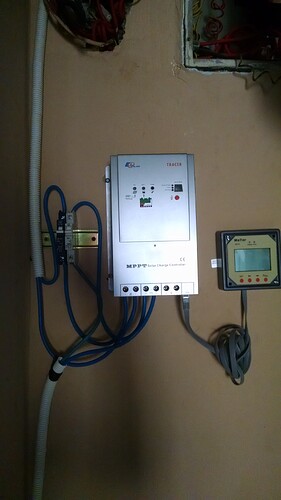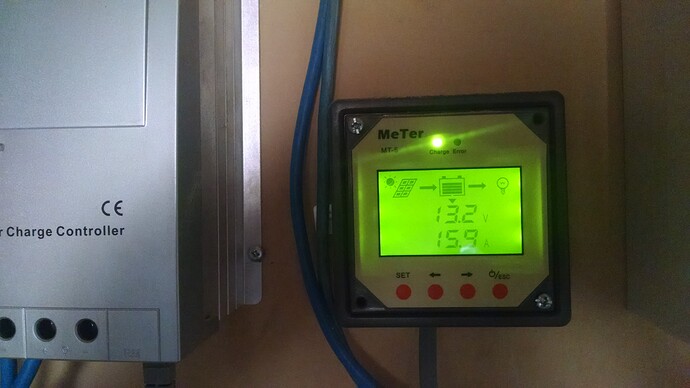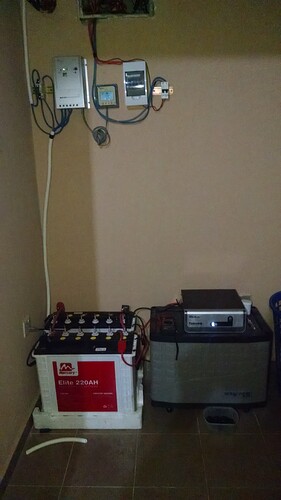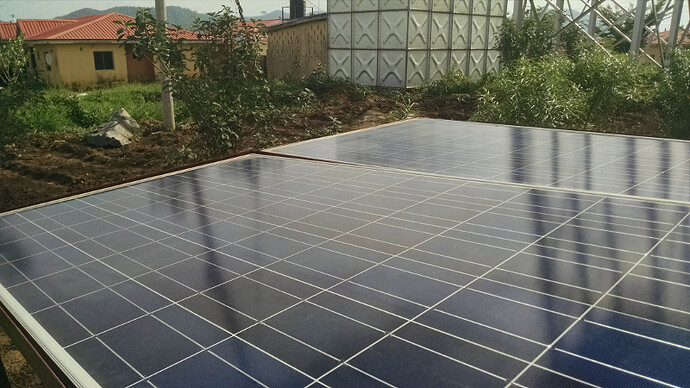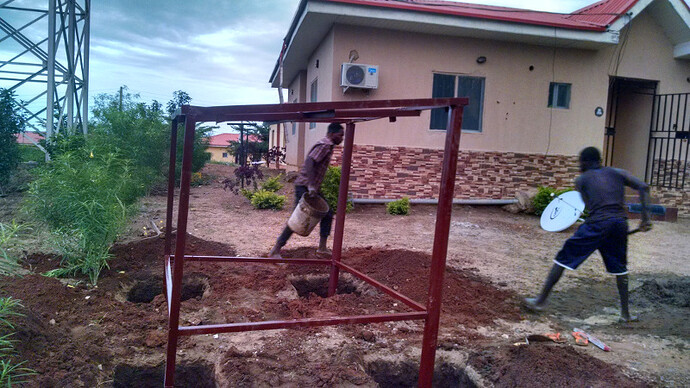For a long time I have been fascinated by the advantages of renewable energy especially solar. I feel the sense of waste considering the sheer among of solar energy wasted everyday (more power than a 1000 nuclear reactors) Anyway when I moved to my new residence. I did so with the mind that I would one day go off grid and I started with taking some few steps.
I hope to use this to chronicle my journey towards energy self sustenance.
The first step I took in my quest for energy sustenance was to get a more energy efficient apartment. Just so happen that my rent was up so I took my time to find a place with well ventilated rooms. My room faces an open street with direct access to the cross wind zero obstruction… the second window faces a vegetable garden I planted, that too has no walls or obstruction for about a 100 meters.
In fact the AC in the room is yet to be turned on due to some electrical mistake made during installation but 4 month on I am yet to see the need to call in an electrician. Even before the Harmattan started, The room is well served fresh air 24/7.
I also made sure to get energy savers light bulb for all the 2 rooms, living room and bathrooms + kitchen. I got philips light bulbs the highest of which is 8watt = 60watt for traditional incandescent light bulb. I got an 42 inch LED tv (well it was beautiful and looked better than the old LCD LG)
10% power requirement self generated:
The first thing I did was to procure a solar lamp. I stay alone and sometimes can be less bothered about electricity as long as my need for vision at night can be met am cool like that. The sunking pro 2 has been a life saver in this regards. It a very powerful solar power lamp. It comes with a 5watt solar panel which I threw to the roof of the house and ran the cable to the kitchen. One day charge is enough to last me 3 days of rigorous use on the lowest setting (which is good enough to cook with at night). The lamp also comes with a usb out which allows me to use it as an emergency phone charger.
I also got 6 outdoor solar powered led bulbs… as noted earlier, my house is not fenced and can be pretty creepy at night with no light… it takes some nerve to go to the backyard. Then there is that feeling of being watched when indoors. You just feel someone is at the window watching your in the dark.
The solar outdoor light has helped considerably. It has motion sensor which allow it to brighten up for 15 seconds once it senses movement… otherwise it default to dim (which is still bright enough) . now I don’t have to worry about some one lurking in the dark. The led lights automatically comes up only at night and go off during the day. That took care of my security lighting issues.
The next stage of my solar project which am currently working at now, is to get an hybrid solar setup. A 1kva system to power my home entertainment system and house lighting. Why 1kva?
well actually an 850VA system would do. all my energy usage for light and home entertainment aren’t more than 600watt tops.
LED TV= 90 Watt, Home Theater = 160 watt, XBMC Laptop charger 65 watt, DSTV decoder = 45 watt. 20 8 watt light bulbs = 160 watt total 520 watt (lets make it a round figure 600 watt)
The goal here is not to go completely off grid but to at least generate 70% of my energy use. The , microwave, blender, and climate control devices can all remain on the grid/generator (for now)
I have already allocated funding for this but am currently at the design stage. Luckily for me, I have 4 240Watt Polycrystalline solar panels.
My goal is to have a hybrid (or grid tired) solar system which allows solar energy to charge battery bank which could also be charged by national grid/generator.
I could of gotten an inverter and be done with it, however that would still tire me to the National Grid and I don’t feel anything which further attaches me to Nepa is not worth the investment.
Here is the basic setup of a grid tired solar setup
Solar Panels — DC current — > Charge controller —> batter bank (Deep circle) <— Inverter <— Grid
—> House
so basically, energy from the sun goes through a charge controller which help regulates and charges the battery bank in an optimal way… the inverter then feeds from the battery and converts the dc current to AC. It can also charge the battery.
The problem here is that the system requires a lot of human intervention. e.g when both NEPA and the Sun is up… your batteries are being charged at the same time which is not good, deep circles batteries are very delicate with how they are charged… charge them improperly and they go bad.
My plan is to use a hybrid inverter system. This is a system which has an inverter and charge controller. It basically setup in a way where the panels, batteries, national grid / generator, and house are connected to it and it figures out how things goes
Solar → Hybrid inverter ← Batteries
Grid/ Generator 
 House
House
An hybrid all in one inverter is also smart, and can allow me to set priorities. I can set it to default to solar in a bright afternoon (when there is power) or default to Nepa.
Because my needs are basic, I indeed to have a 200AH battery setup with option to scale that in future to 400AH. At first I was going with a 12v inverter system which would require one battery. for this I set to use the Su-kam Brainy Hybrid inverter (850VA). It does all I need unfortunately I have 24Volt solar panels while this would work with my setup, the PWM (GOOGLE IT) charge controller would use just half the current power of my panel rendering half of 240 watt useless (This is where an MPPT Charge control shines however the Sukam device is PWM)
The next option is to use the Zinox 1kva 24v Ipowerplus all in one inverter (actually the product is a rebrand of Voltronic Axpert all in one inverter systems) This thing is tight. (GOOGLE IT) it can allow me to use all my 4 240watt 24V solar panels to charge a 24V battery (made from 2 200AH 12V batteries connected in series) It pretty much in the same league as the sukam device, just more powerful and 24V actually is more efficient at power usage than a 12 Volt system…
Cost analysis
Both the Brainy and Axpert device cost 45-50k
Average Battery = 57K ( * 2 in case I go with Voltronic)
2 electrical breakers = 20k
Solar roof mount = 40k (trying to find a way round this)
Installation = 15k
Cables = 10k
172 - 229
My budget is 200kish but still looking to decide which hybrid inverter system I will go with.
I will be updating this space.
of cause, questions and suggestions are welcomed


